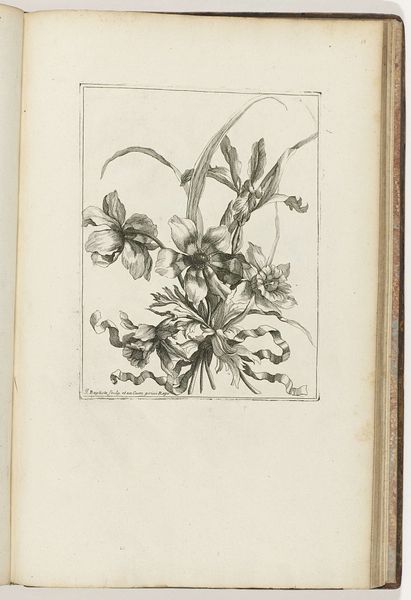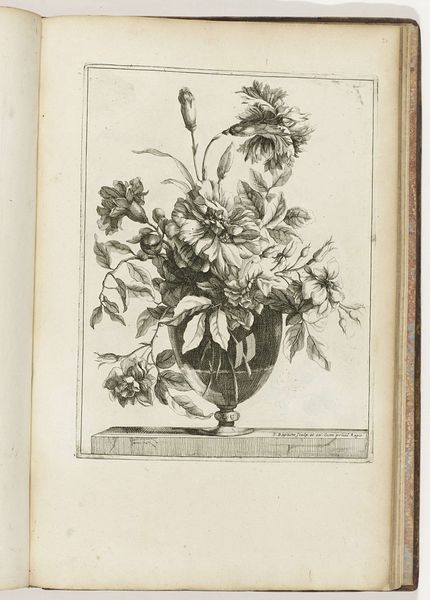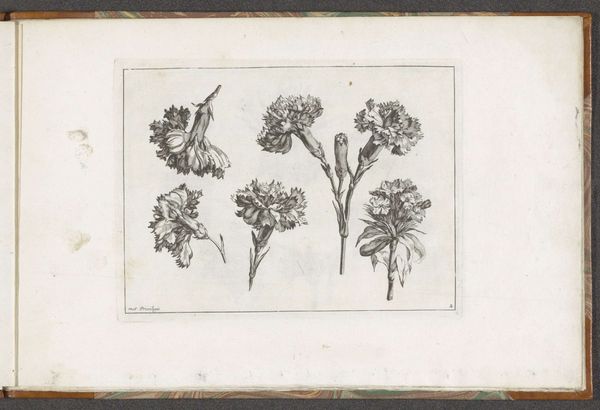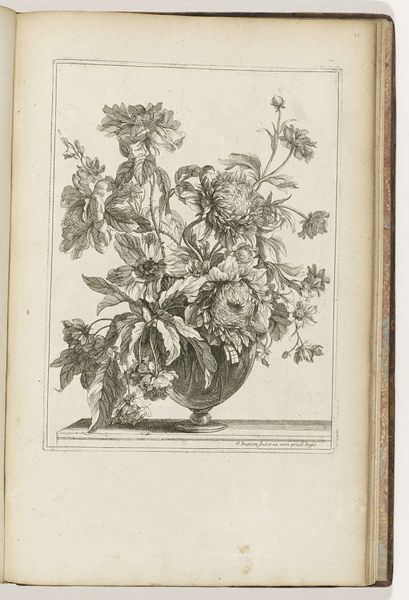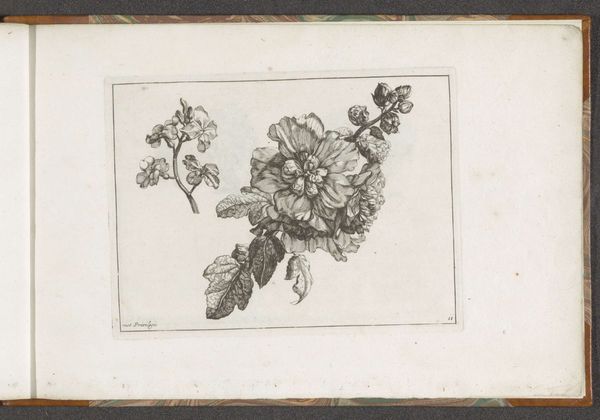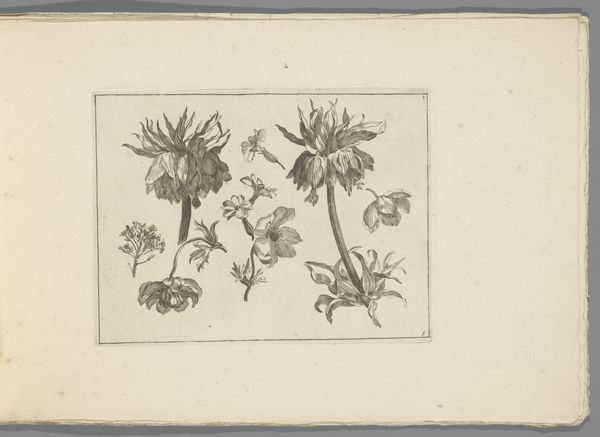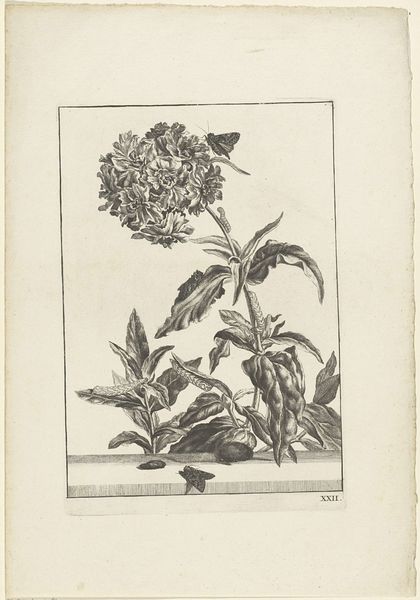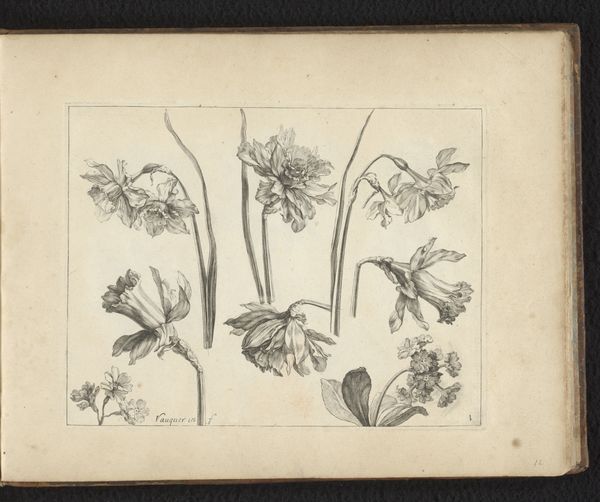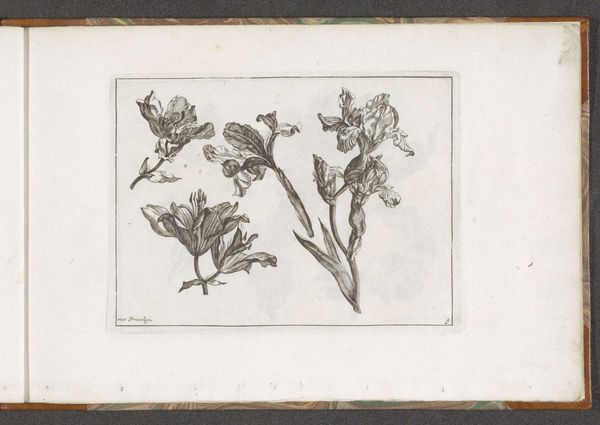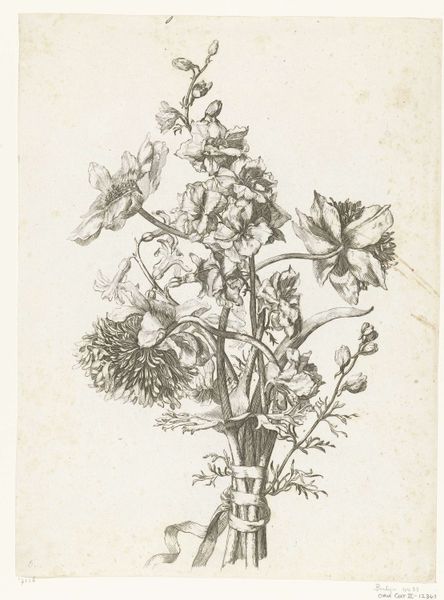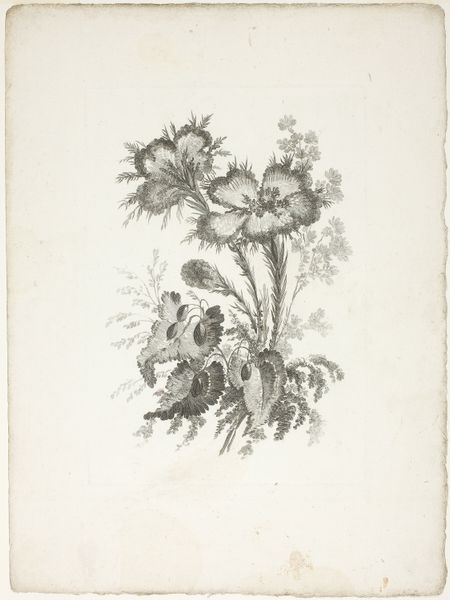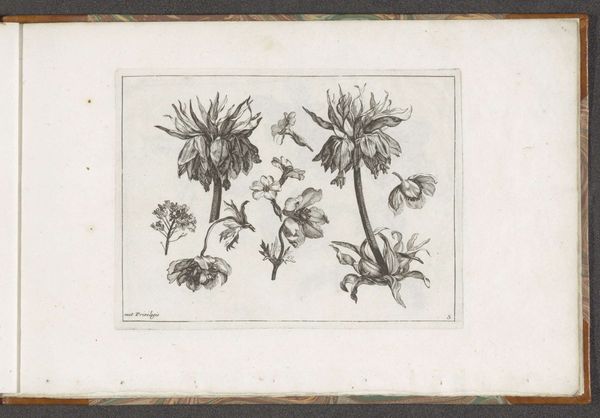
drawing, print, engraving
#
drawing
#
baroque
# print
#
engraving
Dimensions: height 227 mm, width 177 mm
Copyright: Rijks Museum: Open Domain
Curator: Right now, we're looking at "Gebonden Boeket", or "Bound Bouquet," an engraving by Jean-Baptiste Monnoyer, from around 1680-1695. Editor: Ah, it feels so classically baroque, all swirls and frills, even though it's just…flowers! There’s a touch of drama, I'd say. A tightly wound kind of energy, don't you think? Curator: Exactly! Monnoyer, known for his flower paintings, brings that painterly eye even to printmaking. The precision of the engraving creates this incredible texture—look how he suggests the velvety petals. You can almost feel them! Editor: And it's interesting that even in a still life—ostensibly so peaceful—there’s an implicit statement about value. Flowers, especially at this time, were associated with wealth, privilege. Did ordinary people get to enjoy meticulously arranged bouquets like this? Curator: That's such a great point. Floral arrangements back then carried symbolic weight too. Different flowers represented different virtues or sentiments. They weren't just pretty; they were practically coded messages. Editor: Which also emphasizes the societal position of the artist in relation to these status objects—what kind of access would he or she have to rare species? Or the means to purchase them if not organically connected to the ruling class. I wonder what his take was on ephemeral beauty in connection to human decay and death! Curator: You know, art historians often discuss this concept of "memento mori" in still life, where objects symbolize mortality. In this engraving, it is beautifully portrayed by his treatment of form, value, contrast—but as it stands today, preserved between pages, that conversation is prolonged. It transcends past interpretations to reach new meanings in this present context. Editor: So true. What's fascinating for me is how these symbols persist, or how they get re-appropriated, depending on who holds power. It shows how flowers move and transform, just as much as they stay the same. Curator: Absolutely. Thinking about it, Monnoyer really makes you consider not just what’s in the image, but what it represents. The engraving really pushes boundaries! Editor: Mmhmm. I think now I look at it and see that, while undeniably a product of its time, it still has plenty to say about beauty, privilege, and even transience. A thought-provoking bloom indeed!
Comments
No comments
Be the first to comment and join the conversation on the ultimate creative platform.
